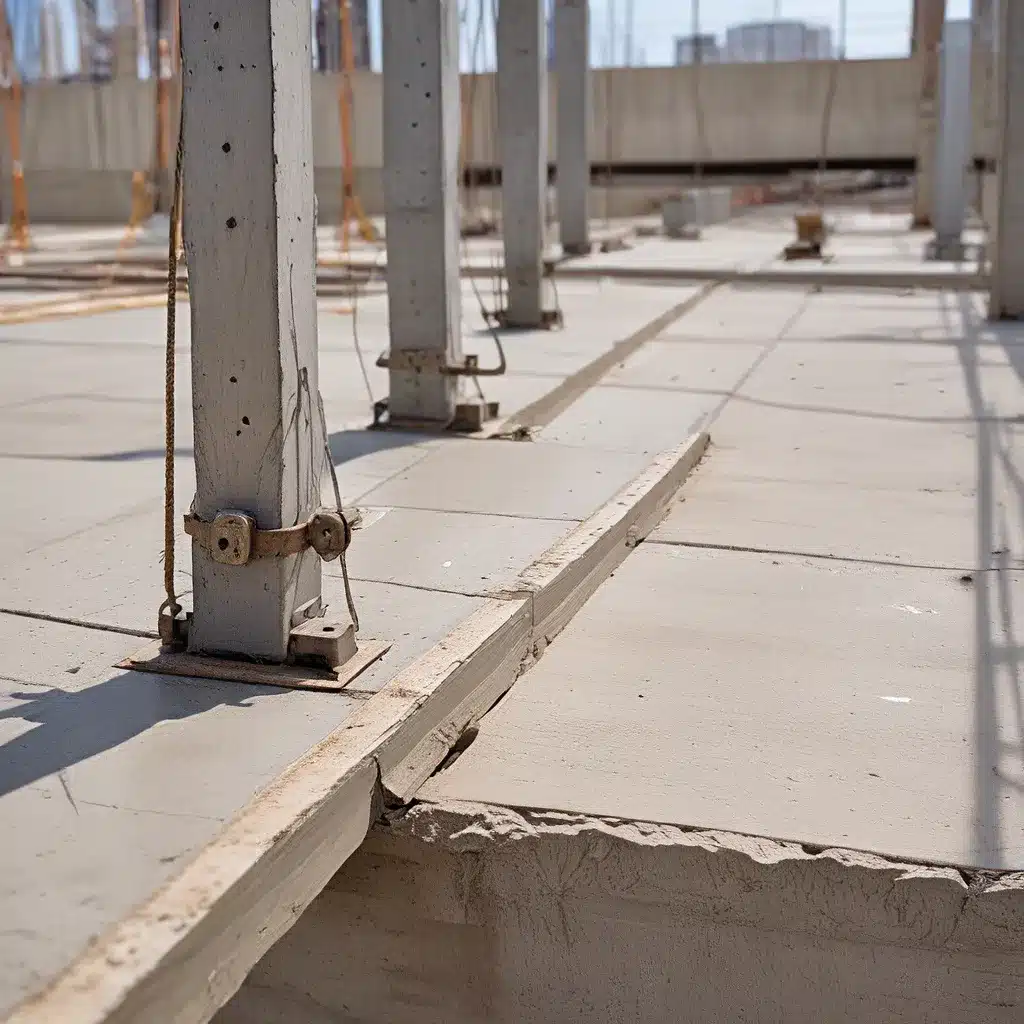
The Importance of Concrete Tensioning for Structural Integrity
When it comes to constructing safe and durable structures, concrete tensioning is a crucial technique that plays a vital role. In the Kansas City area, where the weather can be unpredictable, with hot summers and cold winters, ensuring the structural integrity of concrete is paramount.
Concrete temperature monitoring is essential for post-tensioning projects to avoid premature tension, structural cracks, and blowouts. By closely monitoring the temperature of the concrete during the curing process, contractors and engineers can make informed decisions to protect the integrity of the structure.
One of the primary challenges of concrete tensioning in Kansas City is the effect of temperature on the concrete’s setting and curing process. As temperatures drop, the hydration process of concrete slows down significantly, leading to delayed setting and strength gain. This can impact project schedules and budgets, making it crucial to carefully monitor and manage the concrete’s temperature during the placement and curing phases.
Understanding the Impact of Temperature on Concrete Tensioning
Cold Weather Concreting
When working in very low-temperature environments, cold weather concreting presents a range of challenges for contractors. If the concrete is subjected to freezing conditions before it gains sufficient strength, it can lead to severe damage, such as internal cracking and spalling, compromising the integrity of the structure.
To protect freshly placed concrete from freezing, contractors can apply several important measures, including the use of insulating blankets or the application of external heat sources to maintain the desired temperature. This necessitates careful planning and coordination to ensure the success of the cold weather concreting process.
ACI 306 guidelines suggest that concrete temperature must be maintained higher than a certain temperature for a specific amount of time (40°F or 5°C for 48 hours) to ensure proper strength development and avoid cracking of the concrete.
Hot Weather Concreting
On the other hand, hot weather concreting can also affect the safety and durability of a structure if proper measures are not taken for concrete cooling in the summer. The temperature of the in-situ concrete during hot weather directly affects its strength development, and if the temperature is too high, it can lead to an early peak in strength gain, resulting in a loss of durability.
According to ACI, hot weather concreting is defined as one or a combination of the following conditions that tends to impair the quality of freshly mixed or hardened concrete: high ambient temperature, high concrete temperature, low relative humidity, and high wind speed.
One of the risks associated with hot weather concreting is concrete shrinkage, which can be defined as the reduction of concrete volume due to a loss of moisture. Proactive measures, such as the use of curing compounds, fog spraying, or the application of external cooling systems, can help mitigate the effects of hot weather on concrete tensioning and strength development.
Precision Concrete Tensioning with Innovative Technologies
To overcome the challenges posed by extreme weather conditions in Kansas City, concrete contractors are turning to innovative technologies and techniques to ensure the success of their projects.
Concrete temperature monitoring solutions, such as SmartRock by Giatec, provide real-time data on the concrete’s temperature, enabling contractors and engineers to make informed decisions about the curing process. These wireless sensors can be easily installed on any project, seamlessly tracking temperature fluctuations and providing instant notifications to enhance project management.
By leveraging cloud-based project dashboards, contractors can gain valuable insights into the concrete’s temperature and make proactive adjustments to ensure proper curing, strength development, and the prevention of thermal cracking. This technology is particularly crucial for high-rise projects, where concrete temperature monitoring is essential to maintain structural integrity.
Achieving Long-Term Durability with Precision Concrete Tensioning
Proper concrete tensioning not only ensures the initial structural integrity of a project but also extends the pavement’s service life and reduces the likelihood of premature failures. By achieving the desired concrete strength and maintaining optimal temperature during the curing process, contractors can deliver durable, high-quality concrete structures that stand the test of time.
Concrete Contractor Kansas City specializes in providing precision concrete tensioning services, leveraging the latest technologies and industry best practices to ensure the success of both residential and commercial projects in the Kansas City area. Their team of experienced professionals works closely with clients to understand their unique requirements and deliver tailored solutions that prioritize safety, quality, and long-term value.
Conclusion: Prioritizing Concrete Tensioning for a Safer, More Durable Infrastructure in Kansas City
In the dynamic construction landscape of Kansas City, where weather extremes can pose significant challenges, concrete tensioning remains a critical technique for ensuring the structural integrity and longevity of buildings, roads, and other infrastructure. By closely monitoring concrete temperature, utilizing innovative technologies, and adhering to industry best practices, concrete contractors in Kansas City can deliver projects that withstand the test of time and provide a safe, durable foundation for the community.
Whether it’s a residential patio, a commercial high-rise, or a vital public works project, precision concrete tensioning is the cornerstone of a strong, reliable infrastructure in Kansas City. By prioritizing this essential technique, contractors can contribute to the city’s ongoing development and create a built environment that serves the community for decades to come.

